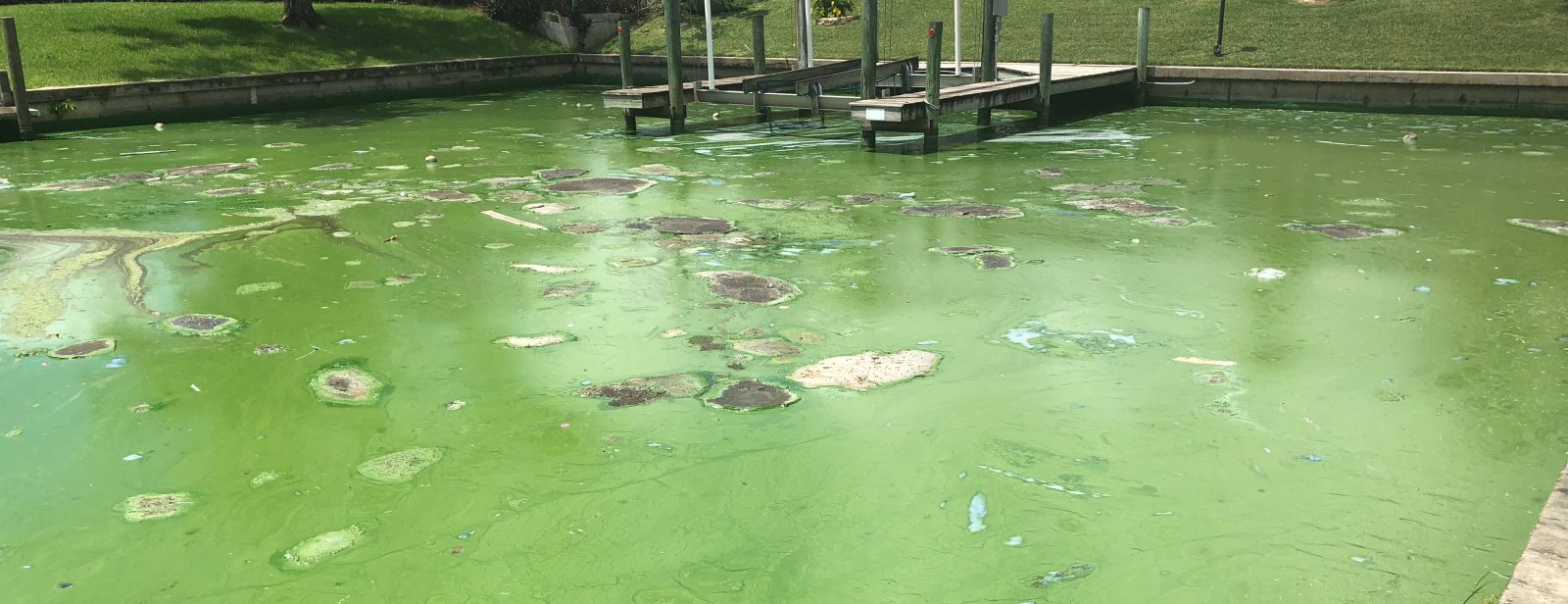
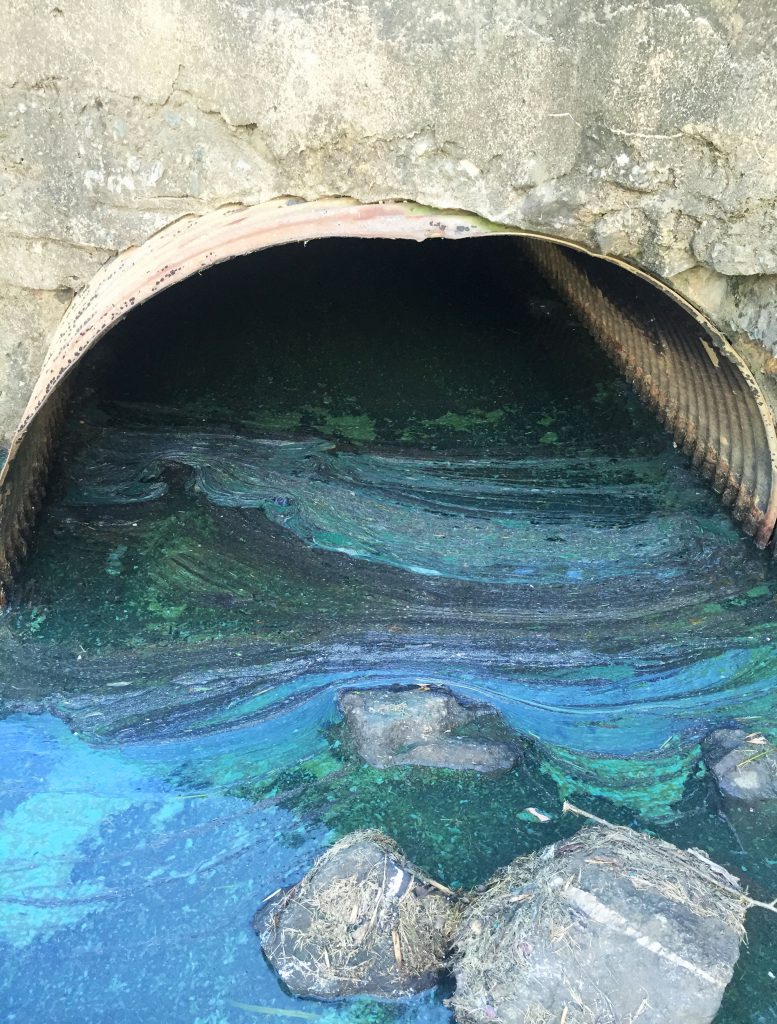
Controlling Dangerous Toxic Cyanobacteria
Excessive cyanobacteria growth has become a serious nuisance and concern in our lakes and ponds across the nation. Commonly referred to as blue-green algae, they are best known for their blooms that have the appearance of spilled paint. Blue-green algae can grow quickly when the water is warm and enriched with nutrients. There are many different species, but the most commonly detected are Anabaena, Aphanizomenon, Microcystis, and Planktothrix. However, multiple species can create a bloom in a waterbody, and the dominant species can change over the course of the season.
Many species of blue-green algae have evolved to control their buoyancy. As the availability of light and nutrients change with the time of day and weather conditions, an algal cell is able to move up and down water depths. At night, when there is no light, cells are unable to adjust their buoyancy and often float to the surface, forming a surface bloom. This means that an algae bloom can literally appear overnight and stay on the surface until wind and waves are able to scatter the cells throughout the waterbody and dissipate the bloom.
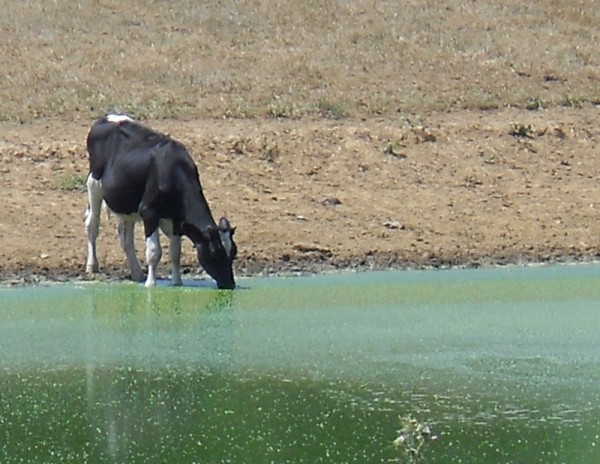
Common concerns associated with blue-green algae are taste and odor compounds and toxin production causing drinking water contamination. Taste and odor compounds are responsible for most complaints when a blue-green algae bloom is present. An “earthy” odor emanating from a waterbody is indicative of the compound, geosmin. Some of the more dangerous compounds that could potentially be produced are neurotoxins (nerve damage), hepatoxins (liver damage), and endotoxins (skin irritants). Toxins are naturally produced chemical compounds within the cells. When the cells are broken open, the toxins are released into the water. This could result in a substantial concentration of the toxins in the water and lead to health issues in humans and surrounding wildlife. Even when the blue-green algae is no longer visible, toxins may be present for some period of time. The only way to determine if these toxins are present is to have water samples collected and analyzed in a laboratory.
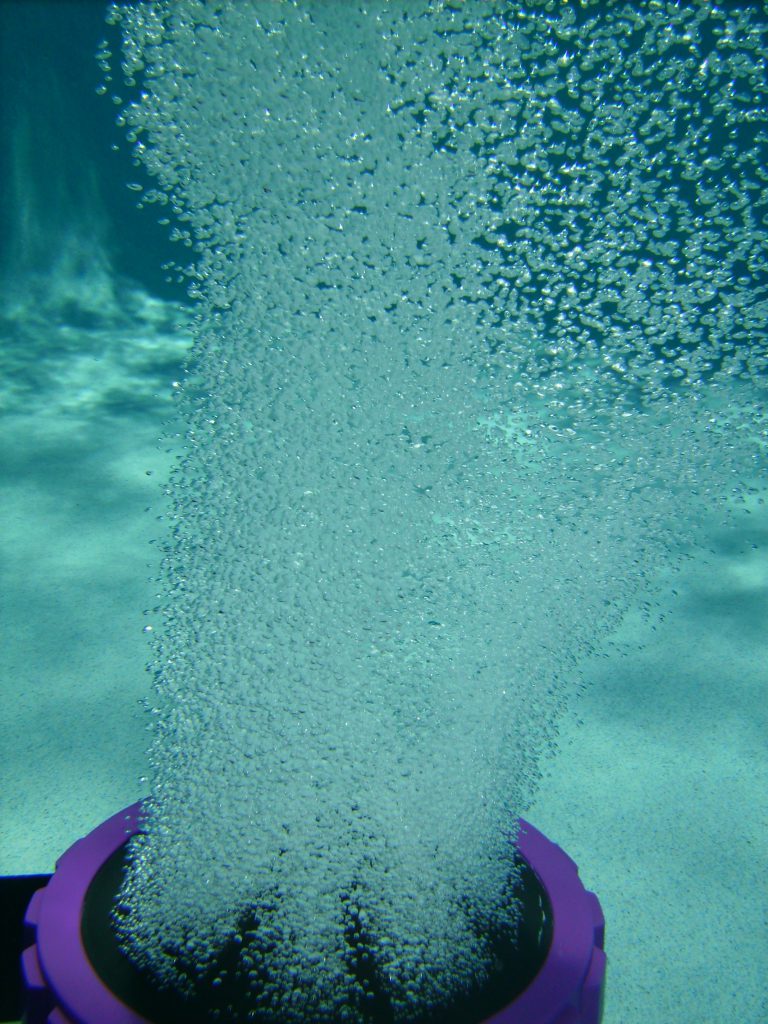
Toxic Algae Management Solutions
There are no quick fixes for the control of blue-green algae once they appear in a lake or pond. Using an algaecide and water quality enhancer in the early stages of a bloom may help to limit the growth and help mitigate excessive nutrients in the waterbody. Eventually, by reducing the overall amount of nutrients within a waterbody, bloom frequency and intensity may be reduced. However, it may take a long time to effectively change the nutrient concentrations in a waterbody. Inputs from the watershed that enter a lake or pond every year will lead to large amounts of phosphorous in the sediment. The nutrients will continue to serve as a source of food for the blue-green algae and lead to future, potentially larger, blooms. There are phosphorus binding compounds that can be applied to your waterbody to help reduce the available “food source” for algae.
Another approach to prevent the nutrients from becoming available to the blue-green algae is the installation of submersed aeration. Adding oxygen at the bottom of a lake or pond will act as the glue that will help bind the nutrients (phosphorous) to the iron in the sediment and keep it inaccessible to the blue-green algae.
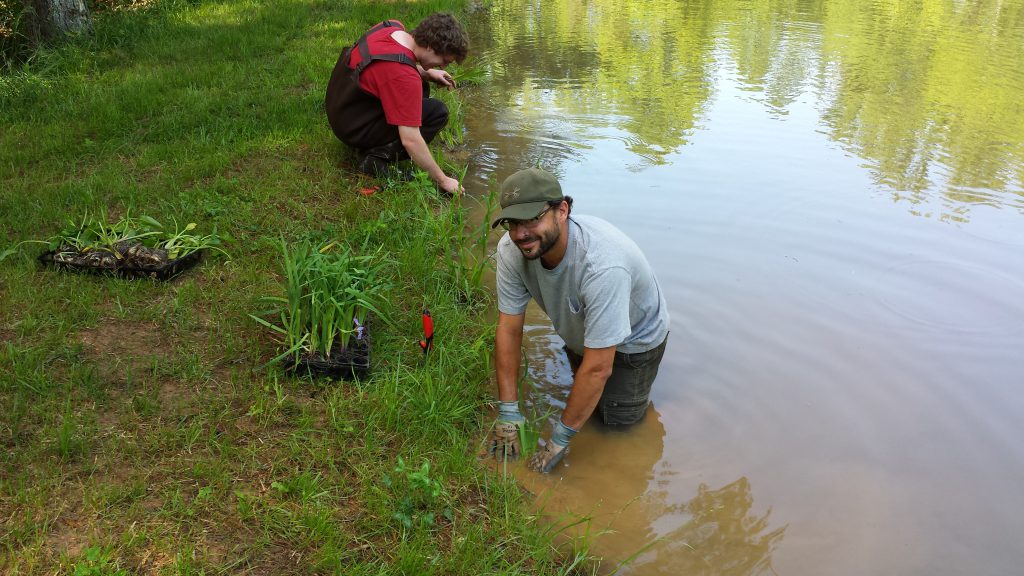
SOLitude Lake Management has the tools, experience, and expertise to help prevent and control a potentially dangerous blue-green algae bloom. Educating residents and managers to use best management practices can also promote awareness and minimize a bloom: using lawn fertilizers only where truly needed, preventing yard debris (e.g., leaves, grass clippings, etc.) from washing into storm drains and waterbodies, and planting native vegetation along shorelines of lakes, ponds and streams are just a few examples. Precautions should always be taken when there are blue-green algae present in a waterbody and residents should wait for a bloom to dissipate before going in or near the water.
SOLitude Lake Management is a nationwide environmental firm committed to providing sustainable solutions that improve water quality, enhance beauty, preserve natural resources and reduce our environmental footprint. SOLitude’s team of aquatic resource management professionals specializes in the development and execution of customized lake, pond, wetland and fisheries management programs that include water quality testing and restoration, nutrient remediation, algae and aquatic weed control, installation and maintenance of fountains and aeration systems, bathymetry, mechanical harvesting and hydro-raking, lake vegetation studies, biological assessments, habitat evaluations, and invasive species management. Services and educational resources are available to clients nationwide, including homeowners associations, multi-family and apartment communities, golf courses, commercial developments, ranches, private landowners, reservoirs, recreational and public lakes, municipalities, drinking water authorities, parks, and state and federal agencies. SOLitude Lake Management is a proud member of the Rentokil Steritech family of companies in North America.









